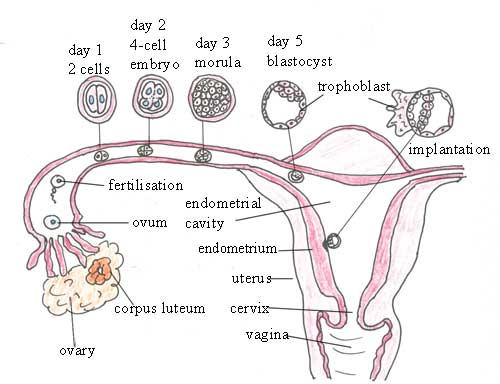5.3 Early development of the embryo
From the moment of fertilisation until the eighth week of pregnancy, the developing human is called an embryo. First it divides into two cells; then they each divide again to give four cells (see Figure 5.3). The process of cell division is repeated many times until a solid ball of cells called a morula is produced after about three days. As the cells in the morula continue to divide, they begin to move towards the outer edges of the ball, until it becomes a hollow ball of cells called the blastocyst at about five days after fertilisation. Notice in Figure 5.3 that the blastocyst has a solid mass of cells on one side of the cavity.
Morula is prounounced ‘morr you lah’. Blastocyst is prounounced ‘blass toh sist’.
While these changes are taking place in the early embryo, it is moving along the fallopian tube towards the uterus. This takes five to seven days.
5.2 Fertilisation

